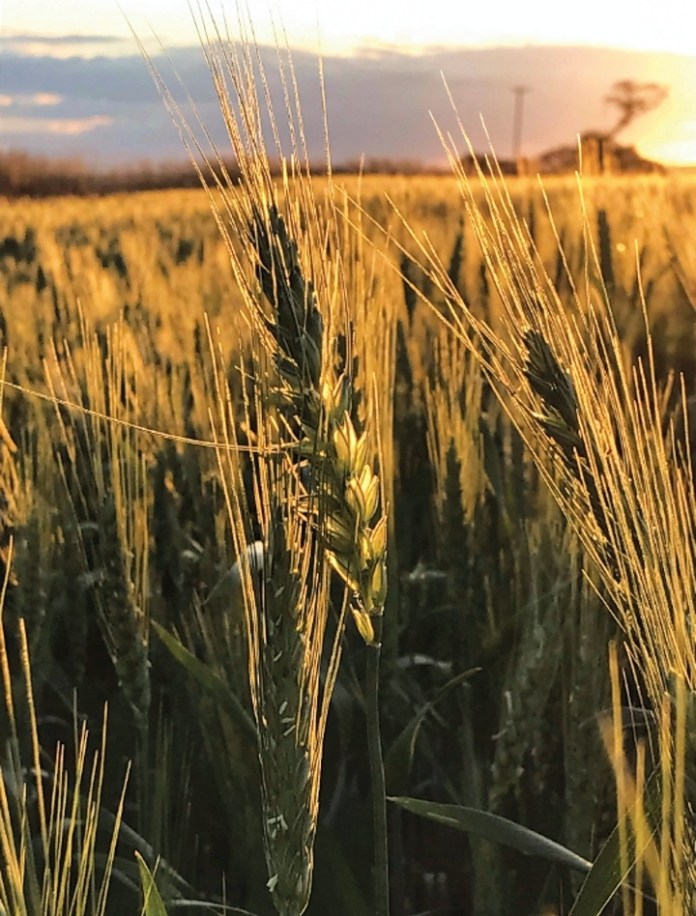|
Getting your Trinity Audio player ready…
|
Doug McClymont on Zimunda Farming Magazine
With some of the excellent wheat crops around the country, one should now be concentrating on getting the most out of the situation. The question that every wheat grower has to answer for himself, is: “when do I stop irrigating?”
To complete the season involves irrigating out the wheat, allowing it to dry, harvesting it, preparing the soil for the next crop, and then planting the next crop. There are five crucial steps that you must make the correct decision on.
1. Irrigating out the wheat. The wheat flag leaf is crucial on the wheat plant for grain fill so keep this leaf factory operating as long as possible. While there is a hint of green, the leaves are still contributing to the plant so keep irrigating. Once the flag leaf is dry then dry matter accumulation ceases? No – this is not the case. If the nodes are still green, the plant is still accumulating yield. At this stage, apply another 20mm irrigation to fill the head and allow a soft soil for the next crop.
2. Drying down. Normally in Zimbabwe drying down is quick. After the last irrigation, inspect the crop every week, sampling the moisture percentage two weeks after ceasing irrigation. When 2-3% off target, start reaping. If still above the ideal percent after reaping, to get the extra dry down bag off, stand the bags upright and delay closing or sewing until the correct percent. This is relatively quick when compared to other methods.
3. Harvesting. If your reaping is 100%, how come there is regrowth wheat in the following crop? Harvesting relies on four major effects: the size of grain, moisture content of the grain, standability and harvesting efficiency. The size of the grain is your problem; make sure the grain reaches full potential. The combine must be in good nick and properly handled. If you are using a contractor, beware. Make sure his machine is cleaned totally before starting. Not doing this contaminates clean sites with Fat Hen (Chenopodium album), wheat’s worst weed. Those seeds have the same density as wheat and are impossible to clean mechanically.
4. Land prep. After you have finished combining, you have four things you can do:
a) Burn off the wheat straw. This you must do every five years or fifth wheat crop. Good hot burn hammers weed seeds and soil surface pests and diseases
b) Leave it in situ and plant into it. This is the conservation tillage route. Remember when you do your fertilizer programme without ploughing you will require another 20kg/ha Nitrogen for equivalence with a ploughed situation where there is breakdown and nitrification
c) Bale off what you can for wheat hay. It is one way of getting rid of the wind-rows. The main downside is that the wheat straw, of all the small grain crops, provides the least nutritious and resilient hay
d) Till the straw as it is. This generally involves ploughing or rip/disking the field. This will of course provide no mulch; you will get a minimal conservation effect. Here, Nitrogen is tied up early, so you need extra nitrogen at planting.
Next, plant the following crop. Having irrigated properly, any subsequent land prep will be a relatively simple affair – the key object here is to leave a planted-into surface that will be suitable for moisture penetration thereafter. The wheat to next crop transition should have no skimping on water for the wheat, proper combining and then progress into the next crop in defined steps.
